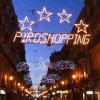PS:Sorry for english mistakes
Thanks
Tutorial 1
1. Take your raw charcoal and crush it with a hammer between two sheets of paper. Wear old clothing and do this outside, since it is very messy. Sieve the charcoal through a coarse sieve (about 30 mesh).
2. Weigh the charcoal. To every 100 grams of charcoal, add 67 grams of sulfur, and fill 1/4th of your ball mill with this mixture. Put the media in and let the mill run for 8 hours.
3. While the mill is running, place 600 ml isopropylalcohol in a large container for every 100 grams of charcoal/sulfur mix you have, and place it in the fridge.
4. When you open your mill, you should find an incredibly fine black/greyish powder. Sieve this to get the media of the mill out, and weigh it. In a separate container, place 75 grams of potassium nitrate for every 25 grams of charcoal/sulfur powder you have. Put the potassium nitrate in an old pan, and add 40 ml tap water for every 100 grams of potassium nitrate.
5. Place the pan on the stove and bring it to a boil while continuesly stirring. When the solution starts boiling, start adding small amounts of water while stirring all the time untill all the potassium nitrate has dissolved.
6. Add an extra 10 ml tap water and the charcoal/sulfur mixture to the boiling potassium nitrate solution. Stir the charcoal/sulfur mixture in the solution. Make sure there are no dry clumbs left.
7. By now, your isopropylalcohol should have cooled to at least 0 deg C or colder. Take the isopropylalcohol outside, and pour the potasium nitrate solution/charcoal/sulfur into the cold isopropylalcohol. Make sure there are no sources of ignition nearby! Stir for a few seconds.
8. Cool the mixture again to 0 deg C at the fastest rate you can. The faster the better.
9. Filter the mixture through an old cloth, and squeeze to get all the liquid out. Discard the black liquid.
10. Spread the black mush out on a sheet of paper, and dry it in the sun. Don't try to dry it inside since it will produce a lot of flammable vapour from the ispropylalcohol. When it is still slightly wet to the touch, press it through a sieve to corn it. Then dry it further.
11. When dry, sieve the black powder through a few sieves to get several fractions for different purposes.
Tutorial 2
The long (and, quite frankly, more useful) version:
To make decent blackpowder, you need a ball-mill: A mill which uses heavy steel balls to crush chemicals. A little bit advanced for beginners, so let's go for a slightly simpler solution instead:
This method is based on the fact that KNO3 is highly soluble in boiling water, and the fact that the same chemical becomes a lot less soluble when you add alcohol to the mix - apart from this, you'll need an absolute minimum of equipment. So: Let's go!
Stuff you need:
* KNO3 (Potassium Nitrate: Salt Peter)
* C (Carbon: regular barbecue wood-coal is good enough, but if you can get pure carbon, from an arts supply store or similar, that'd be better)
* S (Sulphur - as clean as possible)
* Alcohol (cleaning alcohol or isopropanol is best)
* Electric hob (do not make blackpowder on open fire!)
* A piece of textile - as strong and as fine-masked as possible
To make about 200 grammes of black powder:
Measure 30 grammes of Carbon and 20 grammes of Sulphur. These need to be completely powdered - use a pestle and mortar or something like that. Mix it through piece of fine-masked textile (a nylon stocking, for example) and the pieces that don't go through will need to be crushed further. You want no lumps in your mixture.
Now, measure 150 grammes of Potassium Nitrate in 70 ml of distilled water (regular tap water can be used, but distilled is better). When it starts to boil, add the C and S.
Mix until everything is a thick, dark sauce. Congratulations, you now have blackpowder - so be careful.
Take the mixture off the hob, and leave it to cool a minute or so. It may be useful to take your mixture outdoor, as it is now extremely flammable, although it won't explode if it does catch fire, but chances are you can kiss your eyebrows farewell - if you're lucky.
Carefully start heating your mixture again, and add 60 ml alcohol, and stir vigorously. The alcohol will boil, and the fumes coming off your mixture will be highly flammable. This is a strictly non-smoking operation, in other words.
When most of your alcohol is boiled away, add another 20-30 ml, and repeat the above procedure.
Leave it to cool. Move all your mixture onto a strong piece of fabric. Collect all the corners, turning the fabric into a ball - Wring this, so most of the liquid in your mixture falls out.
Take your dry-ish ball of blackpowder, and granulate it into tiny chunks. Use a regular kitchen grater or something. Spread this on a piece of paper, and leave it to dry completely. Don't use heat to dry this, for obvious reasons. Patience is the only way.
When it is completely dry, you have approximately 200 grammes of premium quality black powder. Use it with care.
Edited by BPBR, 21 June 2006 - 08:53 PM.














